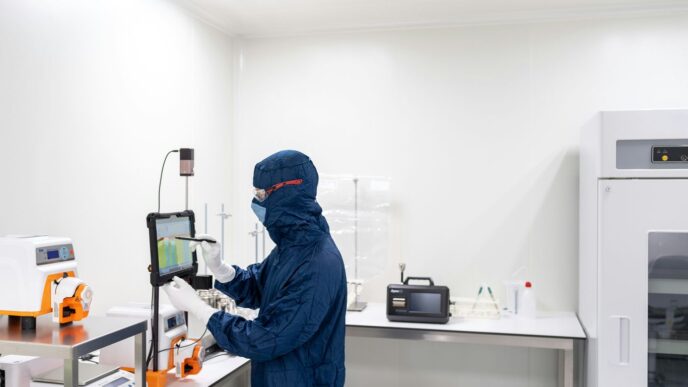The global healthcare sector is transforming faster than ever, and the shift is being led by the rise of global cosmetic medical travel. In the past, people flew across borders seeking affordable treatment or advanced medical services unavailable in their home countries. Today, technology is revolutionizing the entire experience from how patients connect with doctors to how hospitals secure and manage their records.
Digital transformation is rewriting the rules of medical travel by integrating convenience, transparency, and trust at every step. The journey from teleconsultations to blockchain is not just about technology but also about building a patient-centered, efficient, and globally accessible healthcare system.
The Rise of Teleconsultations in Medical Tourism
Teleconsultations have become the new first step in international medical travel. Before a patient boards a flight, they can consult top specialists, review medical options, and get second opinions, all from the comfort of home. This not only builds trust but also helps patients make informed decisions about their destination and expenses. Hospitals now offer detailed online pre-consultations to evaluate cases more accurately and streamline treatment plans.
For medical tourism facilitators, telehealth minimizes uncertainties. Patients can now verify a surgeon’s credentials, discuss recovery timelines, and plan their budgets without delays. This digital-first approach shortens the lead time between decision-making and travel, ensuring patients know exactly what to expect when they arrive.
Key benefits of teleconsultations include:
- Early assessment before travel.
- Cost-saving on preliminary visits.
- Enhanced communication with doctors.
- Reduced anxiety through better preparation.
Digital Portals and Virtual Hospital Tours
The digital experience extends beyond consultations. Many internationally accredited hospitals now offer virtual tours, allowing patients to explore facilities before their arrival. These interactive tours include 3D views of treatment rooms, recovery areas, and patient lounges helping visitors visualize their entire experience.
Such platforms foster transparency and build confidence in the hospital’s infrastructure. Patients, caregivers, and medical travel agents can review rooms, facilities, and services visually. This innovation makes it easier to select hospitals that align with medical, cultural, and comfort preferences.
Digital portals and hospital tours enable:
- Transparent insights into health infrastructure.
- Easy comparison between hospitals.
- A more personalized planning experience.
- Increased trust and engagement from patients.
AI and Big Data in Treatment Planning
Artificial intelligence (AI) and big data analytics are streamlining patient care well before travel begins. By analyzing large datasets from past cases, hospitals can predict recovery times, identify potential risks, and personalize treatment plans for specific nationalities or demographics. AI supports doctors by highlighting best practices and anticipating medical needs based on prior results.
Moreover, medical travel agencies are using predictive analytics to design customized packages that cover treatments, accommodation, and post-care services. This smart data-driven approach optimizes cost efficiency and ensures patients experience high-quality care tailored to their profiles.
AI and big data are transforming:
- Personalized care through analytics.
- Predictive health insights for travelers.
- Greater operational efficiency.
- Smarter cost planning.
Mobile Apps and Patient Journey Tracking
Mobile technology has made cross-border healthcare navigation easier. Dedicated apps now let patients track every part of their journey from visa support to appointment schedules and ongoing recovery updates. With a few taps, they can receive reminders, upload documents, and even chat with doctors or coordinators abroad.
Hospitals and medical tourism agencies use these apps to simplify logistics and prevent miscommunication. The result is a smoother flow of care where every step, from consultation to discharge, feels coordinated and stress-free.
Mobile apps deliver:
- Real-time appointment and travel updates.
- Easy storage for important health records.
- Constant connectivity with care teams.
- Greater peace of mind while traveling.
Cosmetic Medical Travel: The Rising Digital Opportunity
Beyond traditional medical treatments, cosmetic procedures have become a fast-growing part of medical tourism. Thanks to digital marketing, teleconsultations, and transparent hospital reviews, patients from around the world are confidently flying to destinations known for skilled aesthetic surgeons. Treatments like breast augmentation, liposuction, and Brazilian Butt Lifts (BBL) have gained massive popularity due to international social media visibility and trusted before-after results shared online.
Cosmetic surgery clinics are now leveraging advanced imaging technology to provide virtual previews of potential results. For instance, patients considering a BBL (Brazilian Butt Lift) or a breast lift can explore realistic BBL before and after and breast lift before and after simulations using 3D body-mapping software. This innovative approach builds trust and helps patients set realistic expectations before they travel for treatment.
Digital innovations in cosmetic travel offer:
- Realistic 3D visualizations and before-and-after simulations.
- Easier online consultations for personalized aesthetic planning.
- Transparent pricing and procedure comparisons.
- Global access to top-rated specialists and clinics.
Virtual Reality for Pre-Procedure Understanding
Virtual reality (VR) tools now allow patients to experience a detailed explanation of their upcoming treatments visually. Hospitals and clinics across popular destinations use VR to show how surgeries are performed, how the recovery progresses, and what results to expect physically and emotionally. This immersive approach greatly improves understanding.
For international patients, especially those undergoing life-changing procedures like cosmetic transformations or orthopedic surgeries, VR bridges the gap between doctor communication and patient comfort. Seeing the process beforehand boosts confidence and ensures well-informed decisions.
VR in healthcare enhances:
- Patient education through visual experiences.
- Transparent communication between surgeon and patient.
- Greater psychological comfort.
- Overall satisfaction with the medical experience.
Blockchain and Secure Medical Data Management
As cross-border healthcare grows, so does the need for trustworthy data sharing. Blockchain technology ensures all patient records medical histories, imaging files, and billing details remain authentic and protected. Its decentralized structure prevents unauthorized data access and enables hospitals across countries to verify records instantly.
Patients can now carry their digital health passport safely, ensuring security throughout their medical journey. For insurers and regulators, blockchain also improves claims verification and fraud prevention. This public-private balance brings accountability and reliability to international medical travel.
Blockchain contributes by:
- Securing patient data with encryption.
- Simplifying international record sharing.
- Reducing insurance fraud risks.
- Building transparent patient trust networks.
Cloud Technology Connecting Global Healthcare
Cloud computing serves as the backbone of global healthcare collaboration. With its help, medical files, scans, and test results are shared securely between hospitals across countries. This makes continuity of care seamless, especially for patients needing extended follow-ups after returning home.
Cloud systems also streamline communication among multidisciplinary teams from surgeons in Singapore to rehabilitation specialists in London. Patients benefit from faster responses, real-time access to records, and coordinated treatment no matter where they are.
Cloud technology supports:
- Efficient cross-border communication.
- Instant file and diagnostic sharing.
- Faster decision-making by medical teams.
- Ongoing digital health collaboration.
Digital Payments and Transparent Medical Billing
Digital payment systems are revolutionizing how patients pay for treatments abroad. Secure fintech platforms simplify cross-border transactions, offer real-time exchange rate visibility, and reduce service fees. Hospitals are also automating billing systems for greater transparency and fewer financial surprises.
These systems integrate easily with major online wallets, ensuring financial flexibility for travelers. Whether it’s paying for cosmetic surgery packages or complex cardiovascular treatments, digital payments ensure clear, traceable, and reliable transactions.
Digital healthcare payments bring:
- Hassle-free international transfers.
- Transparent billing information.
- Faster refunds and settlements.
- Compatibility with multiple global currencies.
The Road Ahead: Building a Smarter, More Human Healthcare Ecosystem
The digital revolution of medical travel is still unfolding, promising even more advanced technologies in the years ahead. From AI-driven predictive care to augmented reality-assisted cosmetic simulations, international healthcare is evolving into an accessible and personalized experience.
What truly stands out is the human outcome behind this transformation. Patients worldwide now experience safer, faster, and more enjoyable journeys for both lifesaving surgeries and aesthetic enhancements. The future of medical travel is bright a connected global system where technology makes healthcare not just efficient but also deeply human.













